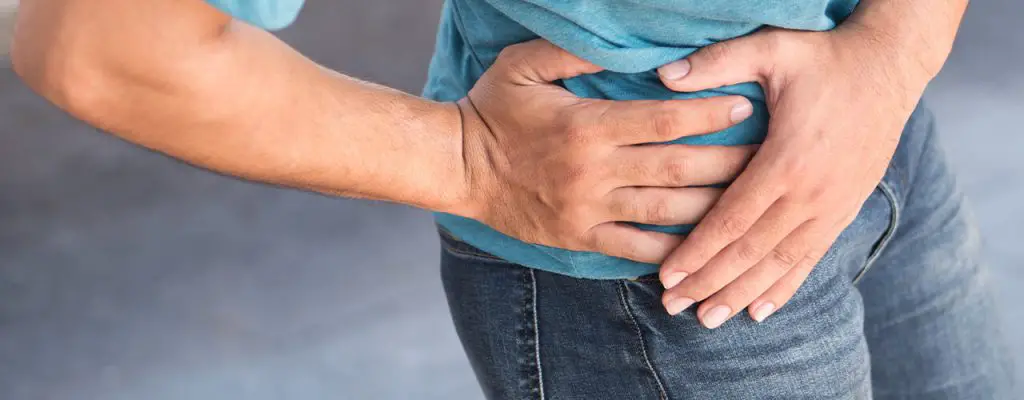Persistent pain in the groin or hip area may mean psoas tendonitis. Very common among athletes, this condition can also affect anyone following overuse of iliopsoas muscles or bad posture.
The pain it causes can be disabling and prevents various daily tasks. Psoas tendinitis can be treated completely. The question that often arises is : how long does it take to heal from psoas tendonitis? The answer in this article.
Definition of psoas tendonitis
As its name suggests, the psoas tendonitis is a inflammation of the iliopsoas muscle tendon. If the tendonitis becomes chronic, the inflammation tends to decrease, but the tissues do not heal, causing the pain to persist. At this point, we are talking about psoas tendinopathy.
It should be known that the iliopsoas muscle consists of iliac muscle and psoas muscle. Respectively, both originate in the internal iliac fossa and at the level of the lumbar vertebrae. They then come together at the upper end of the femur thanks to a tendon.
The very first role of the psoas is to connect the upper part and the lower part of the body. It also aids in many movements of the hip joint, including flexion and extension.
THEinflammation psoas muscle tendon usually develops at its insertion anterior to the hip, on the femur. It is manifested by multiple symptoms including pain in the crease of the groin when bending the hip or when walking or climbing stairs.
To learn a little more about the symptoms, causes and treatments of psoas tendonitis, you can click here.
Psoas tendonitis healing time
As with many tendinitis, the healing time for psoas tendonitis can take several months. Indeed, you should know that the healing time of tendonitis depends on the severity of it.
It can take an extremely long time to heal in a top athlete since he will be forced to stop training. Moreover, an athlete who suffers from tendinitis will find it difficult to regain his previous performance.
On average, a tendinitis lasts between a few weeks to a few months. This is because the appropriate treatment for the situation may vary from case to case.
In the case of a psoas tendonitis, healing time can vary between four to eight weeks with little or no pain after twelve months.
But again, depending on the severity of the psoas tendinitis, complete healing can take several months. In addition, occasional recurrences are frequently observed, which can extend healing over a period of up to six months.
In less severe cases, taking a few days off and putting ice on the painful part may be enough to relieve the psoas tendonitis quickly.
In general, when the psoas pain is long established, it will take longer to heal completely.
Factors favoring the healing of psoas tendonitis
Le psoas tendonitis treatment is based on a conservative treatment that includes several stages. To strengthen and accelerate the effectiveness of the treatment, there are certain factors to consider. Those are the factors contributing to the healing of psoas tendonitis. We will discover them one by one.
Rest calms psoas tendonitis
This is one of the main factors that help heal psoas tendonitis. Resting the muscle and tendon helps calm the inflammation.
It is also indicated to put ice on the skin, because the cold is known for its anti-inflammatory role.
Gradual resumption of physical activities
Resuming physical activities as soon as possible and gradually can stimulate healing of psoas tendonitis. To do this, you have to start with simple and painless activities.
Doctors often recommend using the services of a physiotherapist to obtain a suitable program that allows stimulate the psoas muscle.
Factors affecting the healing of this psoas condition
The bad postures
It is important to pay close attention to unsuitable postures, especially when you are subject to recurrent tendonitis.
Indeed, like other tendinitis, psoas tendonitis is difficult to treat when it becomes chronic.
During the treatment, you have to be vigilant about the postures you take in everyday life, especially standing or sitting too long (especially if it aggravates the symptoms).
Not using the psoas muscle
The fact of not using the psoas muscle for fear of recurrence is a factor that can interfere with the healing of tendonitis. Staying still for several weeks will only slow healing.
As we have already mentioned, it is necessary to resume physical activities little by little. This will help maintain optimal circulation and lubrication of joints and tendons, helpful for a complete healing of tendonitis.
Remember that the time of recovery from psoas tendonitis varies depending on the case. It will only be necessary to treat it at the first symptoms, because chronic tendonitis is difficult to cure. Also remember to follow the doctor's recommendations regarding the factors that promote and limit the healing of psoas muscle tendonitis. This will help you heal quickly.


